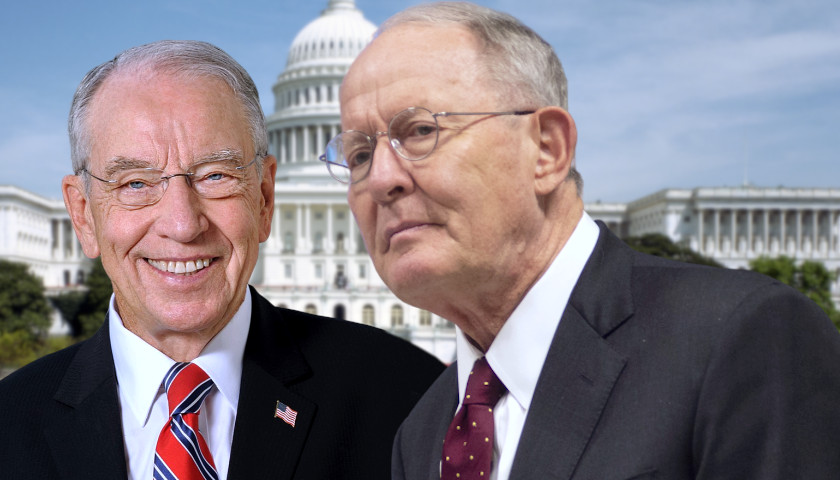By Rick Manning
Our nation’s pension systems are in trouble. Underfunded with outsized promises to beneficiaries who are living longer, the death rattles of the defined benefit pension system, which promises a fixed amount of money per month for retirees, are now audible.
There are many facets of this problem and I will focus upon the four distinct groups of defined benefit plan beneficiaries. Note those who have their retirement funds in 401(k) accounts are not included in this discussion because the pension payments for those are dependent upon the amount in the actual accounts rather than on promises based upon fantasy future projections.
The first, and most obvious, is the Social Security recipient. Social Security is a defined benefit promise to people who paid into the program and were promised an annuity-like payment depending upon the amount paid in, and the number of years worked. Social Security faces two major problems which lead to projections of insolvency in 2035. The first is the retirement of the huge baby boomer generation who are at the midway point in entering the system, creating a massive drain on resources. The second is that someone who is eligible for Social Security at age 62 this year is projected to live to 84 years of age on average. This means that if that person entered the workforce at the age of 18 years old, they will have worked for 44 years, and would be likely to collect Social Security for 22 years. This is far longer than was anticipated when the monthly payment amounts were promised.
The second is the private sector, non-union employee who was promised a pension after reaching some combination of age and years worked. Payments from these pension plans are “safeguarded at 55% of payments” by the federal government’s Pension Benefits Guaranty Corporation (PBGC). These pensions suffer from the same challenges as Social Security with an additional layer of potential underfunding by the employer along with employer bankruptcies which end money flowing into the pension while leaving all the liabilities. While most pension funds are not in bad shape, enough are projected to be in trouble that the PBGC consistently warns Congress that they face catastrophic shortfalls should a wave of corporate failures occur.
The third group are public employees who typically have a pension fund and promised returns that are politically driven with the expectation that taxpayers will continue to be compelled to pay higher and higher taxes due to the political influence of public employee unions. This system is on the brink of failure in many states like Illinois, and another column will be devoted exclusively to this public policy problem.
The fourth grouping, which is the primary subject of this column is the pension promise made to private sector union, multi-employer pension plan (MEPP) retirees, who through some fault of their own, find themselves facing potential massive cuts in their pension payments due not only to the same demographic factors challenging all defined benefit plans, but also due in part to the decision made by lawmakers of both political parties to outsource union heavy industries like steel oversees. With fewer and fewer domestic steelmakers, those steelworker union members found themselves with pension promises and no one paying the premiums.
In other circumstances, over a long period of time, the contract negotiations between the unions and the companies focused upon wages and health care, while giving short shrift to the future pension needs. Union negotiators knew that pensions were tied to wages, so they were pushing pension costs higher through every wage increase, but failed to negotiate for additional funds to be paid into the pension plan. What’s more, in many cases, the amount of employee contributions into the pension was negligible, and now the chickens are coming home to roost.
The Society of Human Resources Managers reports that 114 multi-employer pension plans impacting 1.3 million workers are projected to fail within the next 20 years. Of these, one dwarfs the rest, the Teamsters Central States pension fund which a whopping $18 billion in unfunded liabilities affecting almost 400,000 people is projected to go bust in the next couple of years.
And since every year of delay in meeting this pension time bomb means exponentially higher costs downstream, Congress feels some urgency to meet the private sector pension problem now rather than to make it much more expensive downstream.
Toward that end, Senators Chuck Grassley (R-IA) and Lamar Alexander (R-TN) have draft legislation which seeks to undergird the pension system now to protect taxpayers from being saddled with a massive bailout in the future. The Multiemployer Pension Recapitalization and Reform Plan includes five major components:
- Stabilize plans in immediate danger of failure;
- Secure workers’ and retiree’s benefits;
- Strengthen the PBGC’s ability to backstop the multiemployer system;
- Put the multiemployer system on a stable path for the long-term; and
- Ensure fiscal responsibility.
In essence, these five areas entail increased corporate contributions into both the troubled pension plans and the PBGC, potential union employee payment requirements, an infusion of cash from the government into the system to keep it solvent in the short term while the structural reforms take effect and increases in the MEPP beneficiaries PBGC payment backstop along with some structural changes to MEPP management.
Other reforms which should be considered by the sponsors are an inclusion of provisions compelling the unions themselves to contribute to the pension fund solvency should they fall into an at risk status, require that funds only invest in companies which are transparent with the objective of protecting and growing assets under management, along with judging retirement fund investments solely on fiduciarily sound principles avoiding all social and environmental justice investments which don’t meet basic established standards. Finally, a requirement should be included that unions with troubled pensions convert younger workers to 401(k) style pension plans with employer contributions from the current reliance on defined benefit plans.
The importance of Senator Grassley and Alexander’s attempt to reform the current multi-employer system while it is relatively inexpensive is borne out in the latest Congressional spending spree where they gave a $6 billion taxpayer bailout of a number of United Mine Worker pension funds without any structural reform requirements or a plan to shore up the PBGC system as a whole.
The need to incorporate transparency investment criteria, stop-gap funding for the PBGC system, and requirements which ween younger union members off of the guaranteed to fail defined benefit system now would alleviate the long-term liability problems of today while providing retirement security for private sector union members in the future.
– – –
Rick Manning is the President of Americans for Limited Government.






A LOT OF YOUR COMMENTS WERE INCORRECT & SOME VERY IMPORTANT FACTS NOT MENTIONED AT ALL I WOULD ABSOLUTELY CALL THIS SLANTED JOURNALISM